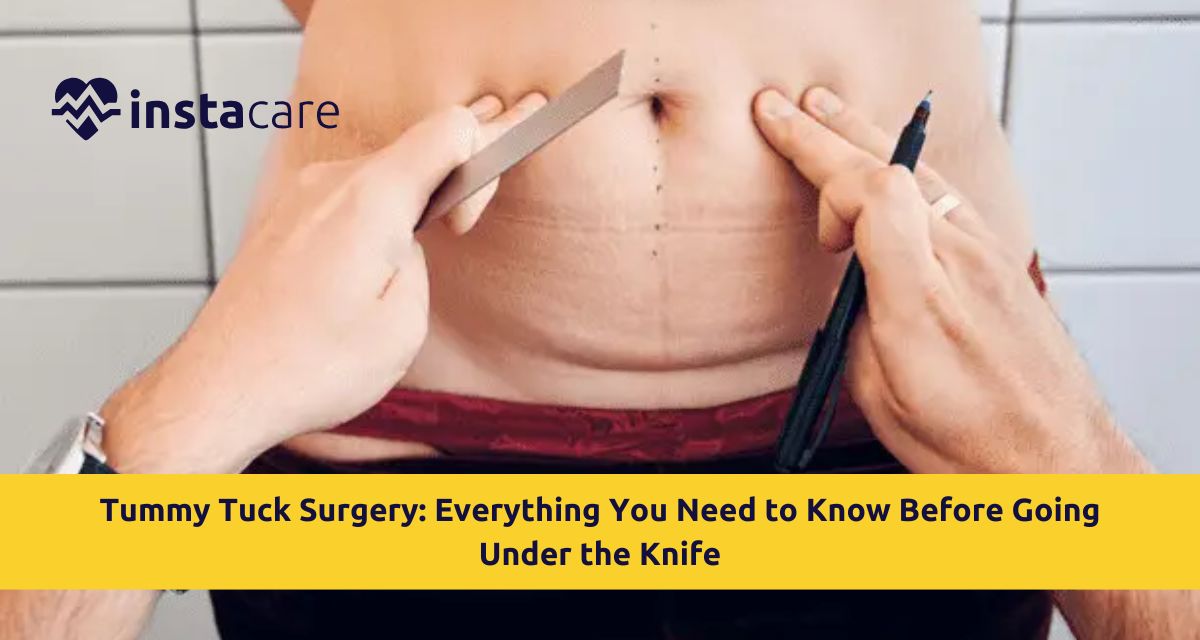Tummy tuck, or abdominoplasty, is a common operation to reshape the belly. It takes out extra fat and loose skin while tightening core muscles, resulting in a flatter, more toned abdomen. Many choose it after childbirth or major weight shifts because it boosts self-image and improves physical look.
Thanks to better methods in cosmetic surgery for stomach, procedures such as partial abdomen correction or complete abdominal reshaping can suit various individual requirements. Knowing what's involved, healing time, expenses, along with possible complications matters greatly prior to choosing this major personal decision.
What Is a Tummy Tuck?
A tummy tuck aims to eliminate extra skin and fatty tissue from the belly area, at the same time firming up deeper muscle layers. In contrast to
liposuction vs tummy tuck, where focus stays on fat removal, this surgery corrects weakened abdominal muscles, especially below the navel.
A mini tummy tuck targets the lower abdomen, below the navel, with reduced invasiveness, therefore, faster healing follows. Although limited in scope, it offers fewer risks compared to full procedures; hence ideal for minor corrections.
Full tummy tuck: addresses full belly region, suitable for individuals experiencing notable loose skin or separated muscles. The procedure boosts how you look while improving stance, abdominal power, because it supports movement ease each day.
Who Is an Ideal Candidate for a Tummy Tuck?
Tummy tuck surgery fits those in solid health having loose belly skin even after trying meals and workouts. Suitable people are:
- Women wanting a post-pregnancy tummy tuck, aiming to regain their earlier shape, with results that reflect personal goals rather than trends, using methods tailored case by case.
- People who have loose skin or leftover fat following major weight reduction.
- Individuals having less strong stomach muscles because of aging, heredity, or earlier childbirth.
Patients ought to hold reasonable expectations, avoid tobacco use, while keeping their weight steady, to achieve the best outcome. Meeting with an accredited plastic surgery for belly specialist helps ensure both well-being and satisfactory results.
Step-by-Step of Tummy Tuck Surgery
The tummy tuck procedure usually includes multiple steps:
- Anesthesia: Either general anesthesia or intravenous sedation helps maintain patient comfort during the procedure.
- With a mini tummy tuck, the cut is shorter and runs horizontally; however, a complete procedure needs a broader line along the lower belly.
- Muscle Repair: During surgery, loose or stretched stomach muscles are pulled together, which strengthens the midsection. A stronger base forms when these tissues heal closer.
- Tightening happens through precise stitching techniques that hold layers in place. Firmness returns once internal support is restored properly.
- Extra skin gets taken out; the rest is shifted into place to create an even shape.
- Closure: Cuts are sealed using stitches; tubes might be inserted to stop liquid buildup.
After surgery, the belly's covered with tight clothing to help with recovery while limiting puffiness. The whole process generally lasts 2–5 hours, varying by the kind of procedure.
Benefits of a Tummy Tuck
Body contouring surgery brings both bodily improvements along with emotional advantages:
- Enhanced tummy shape, appearing smoother yet firmer. While less bulging, it shows tighter definition overall, this results in a more balanced midsection look.
- Enhanced confidence and self-image after correcting sagging skin or stretch marks.
- Stronger central muscles help you stand straighter while boosting balance through better control.
- Clothing that fits better, helps simplify how you pick outfits.
Long-term tummy tuck results tend to persist, given steady
weight gain alongside wellness habits. A procedure on the abdomen gives some people fresh confidence, also encouraging them to stick with healthy habits.
Possible Risks and Complications of Tummy Tuck
Though usually safe, tummy tuck risks may still happen:
- Infection or slow recovery after injury.
- Scar tissue forms at the cut site.
- Blood clots or pooling liquid (known as seroma).
- Loss of feeling or changed sensitivity near the cut site.
- Poor outcomes needing corrective procedures.
Picking a skilled surgeon, then carefully sticking to care steps before and after surgery, lowers risks noticeably.
Post-Surgery Care and Recovery Tips
Tummy tuck recovery is crucial for optimal results:
- Put on tight clothing for a month or more so that puffiness goes down.
- Stay physically inactive, refrain from strenuous tasks like lifting for around six weeks.
- Stick to medicine times along with proper wound cleaning so infections don't start.
- Go to every scheduled check-in so your improvement can be tracked.
- Gentle walks help blood flow and also speed up recovery.
Healing differs per person; outcomes usually become clear after 3 to 6 months due to individual progress rates.
Cost and Considerations of Tummy Tuck
The price of a tummy tuck relies on several factors, type of procedure, the doctor's skill level, clinic charges, or where it's performed. Across the worldwide, rates differ significantly; sometimes they cover anesthetic services, overnight hospital visits, also follow-up treatment.
Health plans often skip coverage for tummy reshaping, except when tied to fixing torn muscles. Before booking the procedure, individuals ought to weigh costs, possible complications, alongside healing duration.
Conclusion
A tummy tuck reshapes the abdominal area, giving it a tighter, smoother look while also improving how you feel about yourself. Because this operation involves several factors, like healing time, price, and possible complications, it's wise to learn what each step means beforehand. Depending on your needs, a partial lift after childbirth or a complete transformation, the tummy tuck before and after outcome may greatly improve quality of life when done by a skilled provider.
Please book an appointment with the
Best Plastic Surgeon in Lahore, Karachi, Islamabad, and all major cities of Pakistan through
InstaCare, or call our helpline at 03171777509 to find a verified doctor for your disease.

